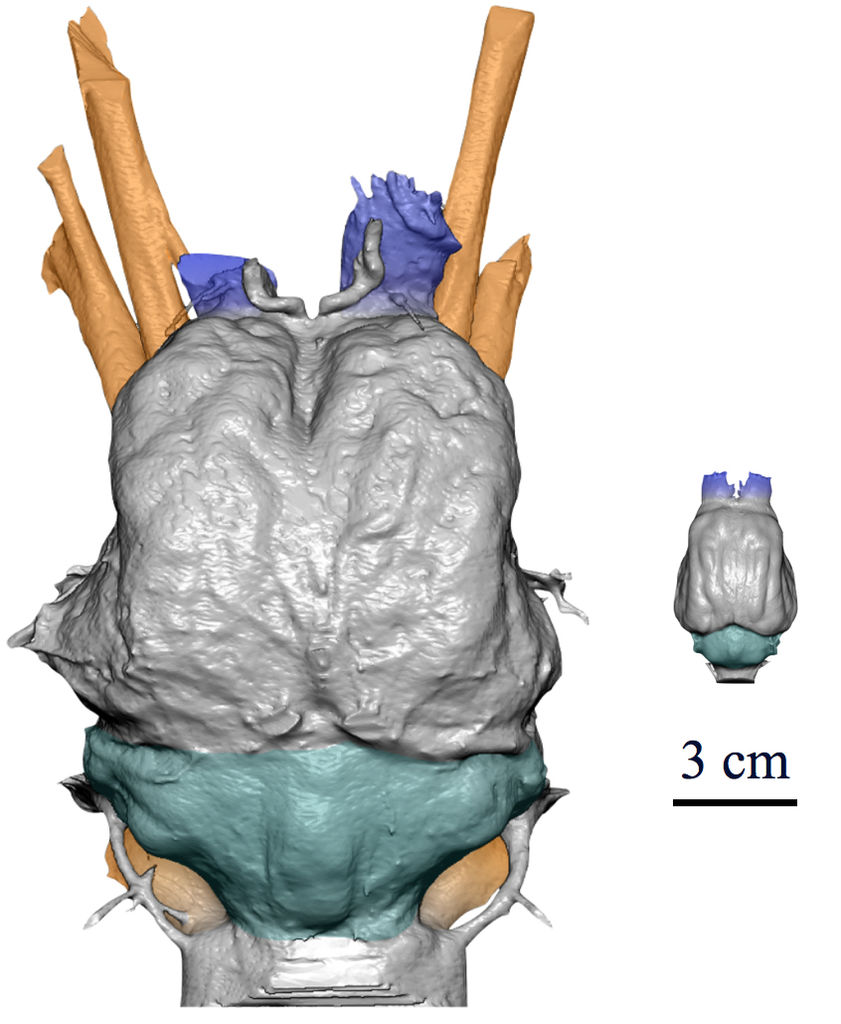
The Giant Sloths of the Pleistocene
A new study coordinated by the Department of Earth Sciences at Sapienza University, in collaboration with a research team from the CONICET - National Research Council of Argentina, sheds new light on the ecological and evolutionary elements of the giant sloth, a mammal that lived in South America over ten thousand years ago, during the Pleistocene, that could weigh over 3 tonnes, but were also unexpectedly agile.
The international team of palaeontologists, coordinated by Alberto Boscaini from CONICET, conducted a series of tomographic analyses on a conserved cranium of Glossotherium robustum, one of these Pleistocene giants. “The ear of mammals,” explains Dawid A. Iurino from Sapienza, “plays an important role in the control of equilibrium. By studying the details of this anatomical part of a giant sloth, we observed that there are many differences with those of current sloths. Indeed, they are much more similar to the ears of modern large mammals.”
The results of the study, which were published on The Science of Nature andJournal of Mammalian Evolution journals, reveal that giant sloths were as agile as hippopotami and rhinoceroses, very heavy animals, but able to move relatively agilely. Thanks to a 3D reconstruction, the researchers were able to study the brain morphology of these mammals, as well as the network of blood vessels and cranial nerves. This information was compared with that of current Amazonian sloths, highlighting the singular dimension of some extremely developed nerves whose function guaranteed a high-level sensibility and ability to move their lips and tonuges. “The Pleistocene Sloth,” continues Prof. Iurino, “had semi-prensile lips that helped them select and grab vegetation, because the extremely large nails on their front paws prevented them from using them to collect foods. They were probably better for digging.”
This curious group of mammals has been the object of the most famous naturalists, from Darwin who found giant sloth fossils in South Sud America, to Georges Cuvier and Sir Richard Owen, who described the first unearthed remains of the anima, and all the way to the recent discovery of footprints and enormous tunnels dug during the Pleistocene. “There is still a lot to understand about the evolution and habits of these animals,” concludes Raffaele Sardella from Sapienza. “Research is already underway with international collaborations and digital technology that will allow us to explore the complex evolutionary processes that modelled these extraordinary mammals”.
References:
Phylogenetic and Functional Implications of the Ear Region Anatomy of Glossotherium Robustum (Xenarthra, Mylodontidae) from the Late Pleistocene of Argentina. Boscaini, A., Iurino, D. A., Billet, G., Hautier, L., Sardella, R., Tirao, G., ... & Pujos, F. (2018). The Science of Nature, 105(3-4), 28 https://doi.org/10.1007/s00114-018-1548-y
Digital Cranial Endocasts of the Extinct Sloth Glossotherium robustum (Xenarthra, Mylodontidae) from the Late Pleistocene of Argentina: Description and Comparison with Extant Sloths - Boscaini, A., Iurino, D. A., Sardella, R., Tirao, G., Gaudin, T. J., & Pujos, F. (2018) - Journal of Mammalian Evolution, 1-17 https://doi.org/10.1007/s10914-018-9441-1
For further information
Dawid Iurino
Dipartimento di Scienze della Terra, Sapienza Università di Roma
dawid.iurino@uniroma1.it
Raffaele Sardella
Dipartimento di Scienze della Terra, Sapienza Università di Roma
raffaele.sardella@uniroma1.it
